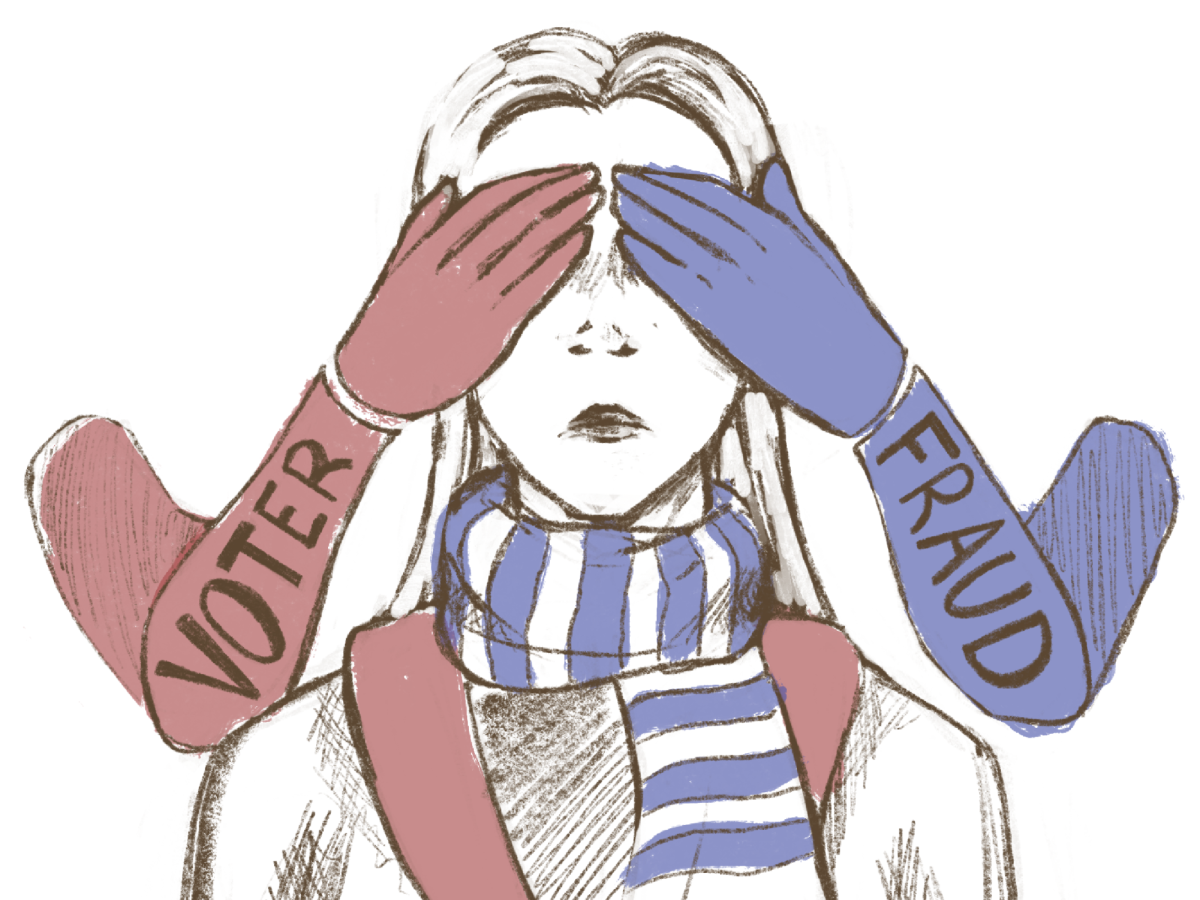Many news organizations and think tanks that tout overwhelming evidence behind voter fraud claims are accompanied by paragraphs with emotive language. Before introducing their evidence, they stir the pot with how important democracy is to America, how imperative it is to keep it and finishing with how voter fraud is stealing that away. It would make anyone, right or left-leaning, concerned because upholding standard American values of democracy is vital to many Americans. It would make sense how someone could take supposed “evidence” and run with it. When deciding your opinion on any political issue, it is important to properly inform yourself of the truth.
News organizations representing polarizing political extremes should be avoided, however, organizations that slightly lean left or right can still have correct information. Just because a source leans one way does not mean all of the information is false. It is possible it could be biased, depending on who supplies the funding and what their objective is. It is important to decide if a source is trying to manipulate evidence to push its ideals, or if a source has real evidence to support the truth — in this context, the truth about voter fraud numbers and voter identification laws.
Misleading “evidence”
The Heritage Foundation, the leading conservative think tank, contains an election fraud database on its website. The election fraud database claims to supply 1,453 proven cases of voter fraud since 1979. Each case includes a small paragraph detailing the person’s name, the type of voter fraud they committed and what repercussions ensued.
What is interesting to investigate is how The Heritage Foundation overstates its numbers. This is not something just said in a random article. This is something you can look into yourself. The database allows for exploration into the cases. You can refine the search by a specific state, year, type of case or type of fraud. Under “type of fraud,” I looked at the “miscellaneous” category to find that some of the cases being grouped into the total cases of voter fraud were mere misdemeanors.
For example, in Pennsylvania in 2018, Calvin Mattox was an election board worker accused of intimidating those who did not want to vote Democrat, as was Wallace Hill, Thurman George, and Delores Shaw, all of whom are included in the number of voter fraud cases. There are a couple of pages of entries of names under “miscellaneous” alone that should not be counted with the number of voter fraud cases. According to USA.gov, voter intimidation is not considered voter fraud; it is a civil rights violation. While this is still a federal crime, it should not be used to boost voter fraud case numbers.
In addition, under “type of fraud,” I looked for all impersonation cases. For the years listed, which ranges from 1979-2023, I counted only 25 cases of impersonation fraud. Only 25 of the other thousand cases might have been prevented by requiring voter ID at the polls.
Voter fraud deemed unlikely: is it really worth it?
The Brennan Center For Justice at New York University School of Law is a left-leaning think tank and a law firm with additional roots in advocacy. An extensive report titled “The Truth About Voter Fraud” was published in 2007 by The Brennan Center For Justice.
Written by Attorney Justin Levitt, the report begins by detailing instances where conclusions inciting voter fraud were drawn from data errors or misunderstandings. For example, two voters who actually have the same name and same birth date or voters being registered in multiple states after moving. It tackles numbers of alleged dead voters by cataloging specific cases in specific states where it turns out that those people had died shortly after voting and no fraud was committed.
In addition to explaining wrong accusations, this report recognizes proven cases of voter fraud. For example, in the 2004 election in Wisconsin, Levitt says there were 2,997,007 total votes cast in the state and 277,565 votes cast in Milwaukee.
He writes, “There were 7 substantiated cases of individuals knowingly casting invalid votes—all persons with felony convictions. This amounts to a rate of 0.0025% within Milwaukee and 0.0002% within the state as a whole. None of these problems could have been resolved by requiring photo ID at the polls.”
In the general election in 2000, there were 2,361,586 votes cast in Missouri. According to Levitt, “There were 6 substantiated cases of Missouri votes cast by ineligible voters, knowingly or unknowingly, except for those votes permitted by court order.” The calculated rate is 0.0003%. Again, Levitt repeated that not one of these cases could have been prevented by requiring photo ID in order to vote.
While the report from The Brennan Center For Justice only includes research up until 2007, highly reputable sources have done reviews on more recent cases of voter fraud. In an Associated Press review focused on the 2020 election, the news organization investigated the swing states of Arizona, Georgia, Michigan, Nevada, Pennsylvania and Wisconsin and found fewer than 475 cases of voter fraud.
AP remarked, “The cases could not throw the outcome into question even if all the potentially fraudulent votes were for Biden, which they were not, and even if those ballots were actually counted, which in most cases they were not.”
Not only are fraudulent votes relatively ineffective, but it is highly unlikely that an individual would risk fines and jail time for one single vote that will likely not change an election alone. The biggest concerns regarding voter fraud stem from the accusations of immigrants and noncitizens voting with the intention of tampering with elections.
According to The Brennan Center For Justice, “We are not aware of any documented cases in which individual noncitizens have either intentionally registered to vote or voted while knowing that they were ineligible.”
As aforementioned, the fines and jail penalties if caught are not worth it for one vote, and additionally, it is hard to believe a noncitizen would risk deportation if caught. In spite of implicit evidence condemning noncitizen voter fraud, some politicians push for stricter voter ID laws.
How supporting voter fraud claims helps campaigns
Hans von Spakovsky, manager of The Heritage Foundation Election Law Reform Initiative, is also one of the members of Trump’s Voter Fraud Commission. Vice-chair of the commission, Attorney General of Kansas Kris Kobach, is known for his claims of rampant voter fraud, his push for stricter voter ID laws, and for advising Trump on anti-voter and anti-immigration policies.
In 2018, Kobach was fined for ignoring court orders and providing voters with misinformation. In June of 2018, U.S. District Judge Julie Robinson decided that voters did not have to provide documentation of proof of U.S. citizenship in order to register in Kansas, as it goes against the constitutional right to vote.
Robinson found that Kobach had been treating voters supported by the ruling differently than other voters. According to AP News, after Robinson’s decision, Kobach did not ensure local officials gave out voter registration cards notwithstanding one’s ability to show proof of U.S. citizenship, and he did not make sure all local officials were aware that voters need not provide proof of U.S. citizenship. Kobach was fined more than $26,000 in sanctions because of his actions.
There is plenty of other evidence dismissing claims of rampant voter fraud in U.S. elections — much of which is included in the aforementioned articles. If there is not nearly evidence to show that requiring voter ID would help decrease the already-rare voter fraud, and if the person pushing for stricter voter ID laws, Kris Kobach, was sanctioned and could not provide enough evidence in court, it leaves one to wonder how and why these outlandish claims still prevalently exist.
It does not seem like these claims will disappear any time soon, which is why it is important to do your own research on reputable sites with unbiased evidence. It is also becoming increasingly important to look for the truth to base your opinion on, rather than scraping together evidence to support your current opinions.






Nancy Amelunke • Oct 21, 2023 at 9:10 pm
Very well written.